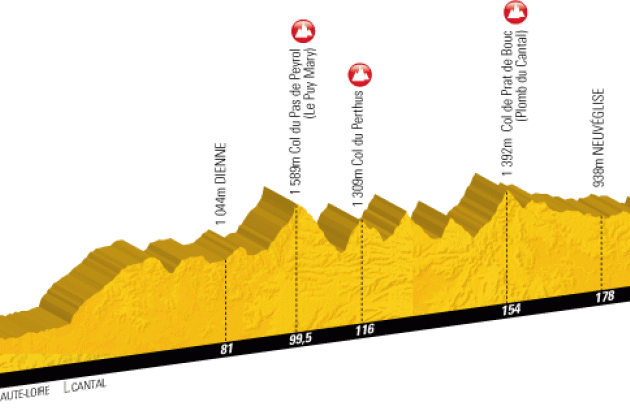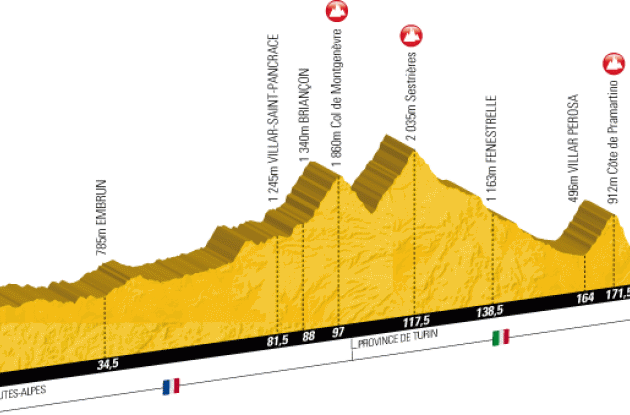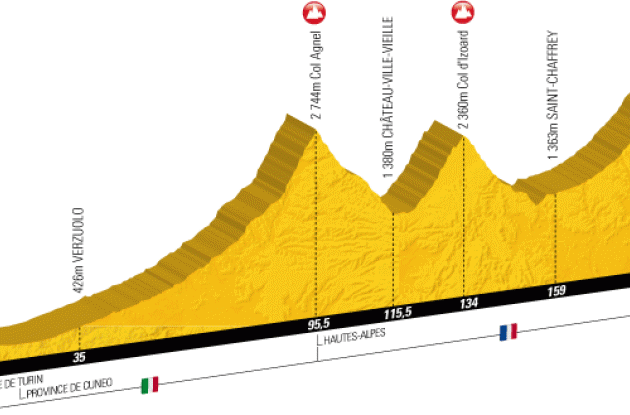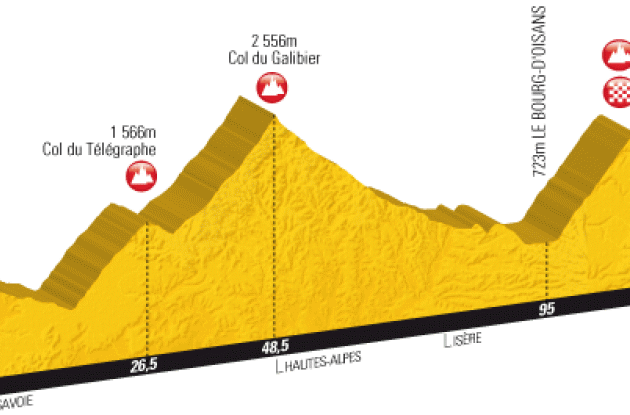2011 Tour de France Route Analysis
This week, the parcours of the 2011 Tour de France was unveiled.
This week, the parcours of the 2011 Tour de France was unveiled in Paris.
This week, the parcours of the 2011 Tour de France was unveiled. The 2011 Tour will consist of 10 flat stages, six mountain stages with four summit finishes, one individual time trial, and one team time trial. There will be 23 Category 2, Category 1, or Hors Categorie climbs. The race will be 3,471 km long. As always, it will be a challenge for all.
The 2011 Tour de France will begin in the Vendee, on the west coast of France. Stage 1 will be a 191-km ride from the Passage du Gois La Barre-de-Monts to Mont des Alouettes les Herbiers. The stage will end with a sharp, 232-m climb that might play to the strengths of someone such as world champion Thor Hushovd (Team Garmin-Cervelo).
Stage 2 will be a 23-km team trial on a pancake-flat course in and around Les Essarts. The stage will be an early test of strength for the teams with contenders. Each rider will receive his actual time.
Stage 3 will take the riders out of the Vendee and into Brittany, a stronghold of French cycling. The rolling, 198-km run from Olonne-sur-Mer to Redon should end in a bunch sprint, which someone such as Mark Cavendish (Team HTC) should win.
Stage 4, a 172-km ride from Lorient to Mur-de-Bretagne, is unusual for an early Tour stage because it features a summit finish. The contenders probably will not fight for the win this early in the race, however. Look for a no-hope climber to take it.
The riders will experience more of Brittany in Stage 5, a 158-km run from Carhaix to Cap Frehel. The stage should end in a sprint finish.
Stage 6, which will take the riders from Brittany into Normandy, might end in a late stage break. The 226-km ride from Dinan to Lisieux, the longest stage of the 2011 Tour, features a steep climb less than two km from the finish. Look for a rouleur to grab this one.
The sprinters should have their way in Stage 7. The 215-km run from Le Mans to Chateauroux has no major difficulties, and riders such as Cavendish or Oscar Freire (Rabobank) should have the best chance of winning.
Stage 8, a 190-km ride from Aigurande to Super-Besse Sancy, will be the first medium mountain stage of the race. The race ends with a climb that might be challenging enough to make the climbers fight for the stage win.
Stage 8 will take the riders into the Massif Central, but Stage 9 will be a stage that will be completely fought out in that region. The 208-km ride from Issoire to Saint-Flour will feature three categorized climbs. A breakaway is likely to decide the outcome of this stage. The first rest day will take place after this stage.
Stage 10 will be a rolling, 161-km run from Aurillac to Carmaux. The stage should be won by a sprinter.
Stage 11, a 168-km ride from Blaye-les-Mines to Lavaur, will be another rolling stage that should end in a bunch sprint. Look for the sprinters to compete fiercely on what will be their last opportunity to win before the 2011 Tour reaches the Pyrenees.
Stage 12, a 209-km ride from Cugnaux to Luz-Ardiden, will be the race's first Pyrenean stage. The riders will go over the Houquette d'Ancizan and the Col du Tourmalet before climbing to the finish at Luz-Ardiden. Look for the GC contenders to bare their fangs for the first time.
A long breakaway might win Stage 13. The 156-km ride from Pau to Lourdes will feature the Col d'Aubisque and the Col du Soulor, but the climbs will be too far from the finish to affect the outcome of the stage. Look for an escape on either the Aubisque or the Soulor.
The last Pyrenean stage will be the 2011 Tour's queen stage. Stage 14, a 168-km ride from Saint-Gaudens to Plateau de Beille, will feature six categorized climbs, including the summit finish. Look for a battle on the final climb.
Stage 15 will take the riders away from the Pyrenees. The 187-km run from Limoux to Montpellier will end in a sprint finish. Look for a Cavendish, a Freire, or a Hushovd to win. The second rest day will follow this stage.
Stage 16 will move the riders into the foothills of the Alps. The rolling, 163-km ride from Saint-Paul-Trois-Chateaux to Gap will be rolling and will probably end with a late stage break on the Col de Manse.
In Stage 17, a 179-km ride from Gap to Pinerolo, the riders will enter the Alps and Italy. The riders will ascend the Col de Montgenevre and the Col de Sestrieres before crossing the Italian frontier. They will tackle the Pra'Martino before descending to the finish.
In Stage 18, a 189-km ride from Pinerolo to Galibier Serre-Chevalier, the riders will reenter France. They will go over the Col Angel, the Col d'Izoard, and the Col du Galibier. The riders will scale the Galibier again the following day.
Stage 19 will be another Alpine climbing stage. The field will tackle the Col du Telegraphe and the Col du Galibier before taking on the 21 switchback turns leading to the summit of Alpe d'Huez. Stages 17 to 19 will be epic stages.
Stage 20 will be a 41-km individual time trial in and around Grenoble. It will feature two climbs, and while someone such as Fabian Cancellara might be the betting man's favorite, it is wise to remember that at the end of three-week tours, a rider who recovers well after hard stages such as those in the high mountains might surprise. The stage will present a final chance to move up a place or two on GC.
Stage 21, a flat, 160-km run from Creteil to Paris, will be a procession for the winner. The entry into Paris, however, will be the signal for the sprinters' teams to take over the stage. The stage usually ends in a bunch sprint, and it should this time. A Mark Cavendish, an Oscar Freire, or a Thor Hushovd should win.
Stay with Roadcycling.com and Roadcycling.mobi for all of the news during the run-up to the 2011 Tour de France!















